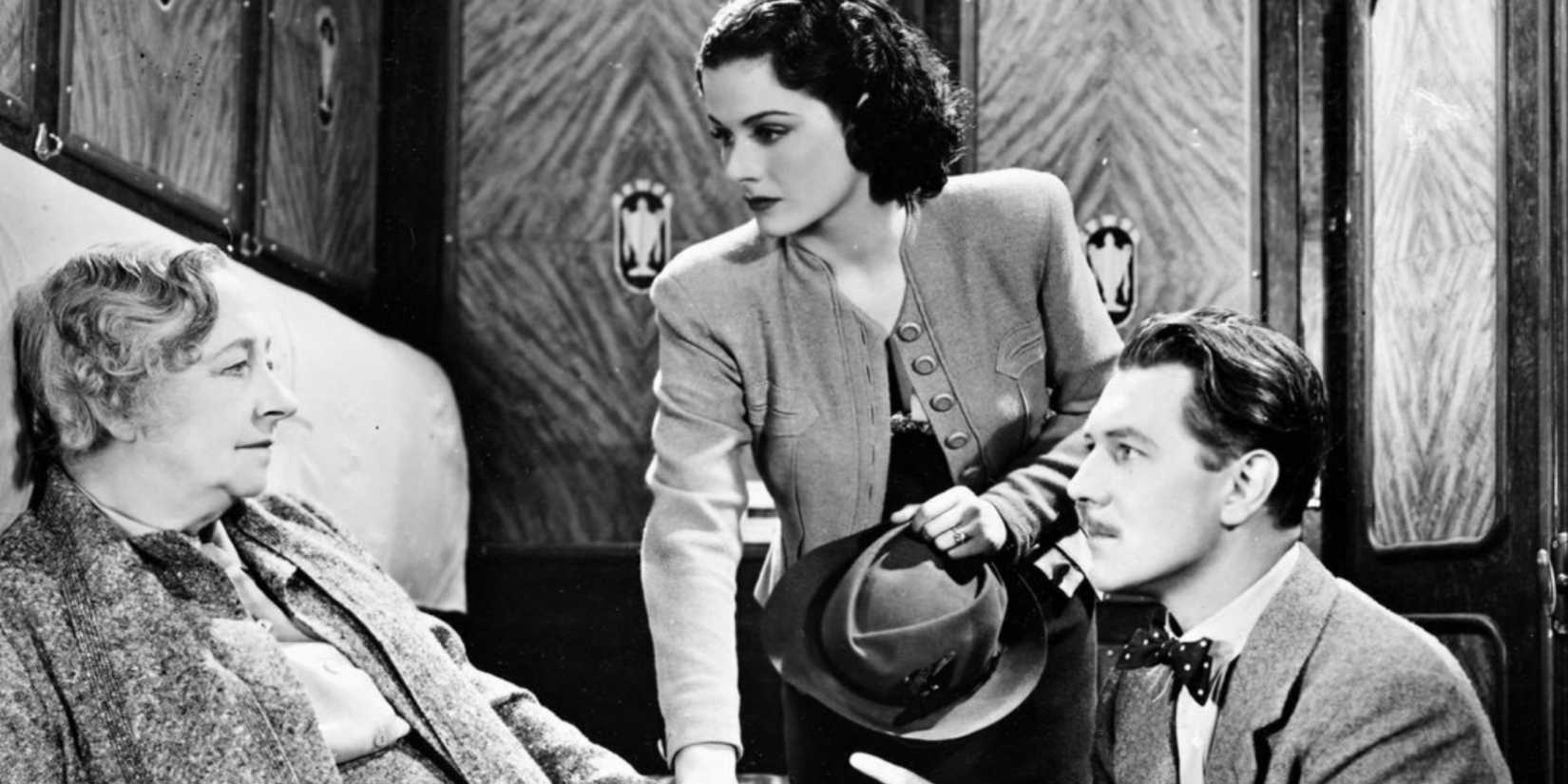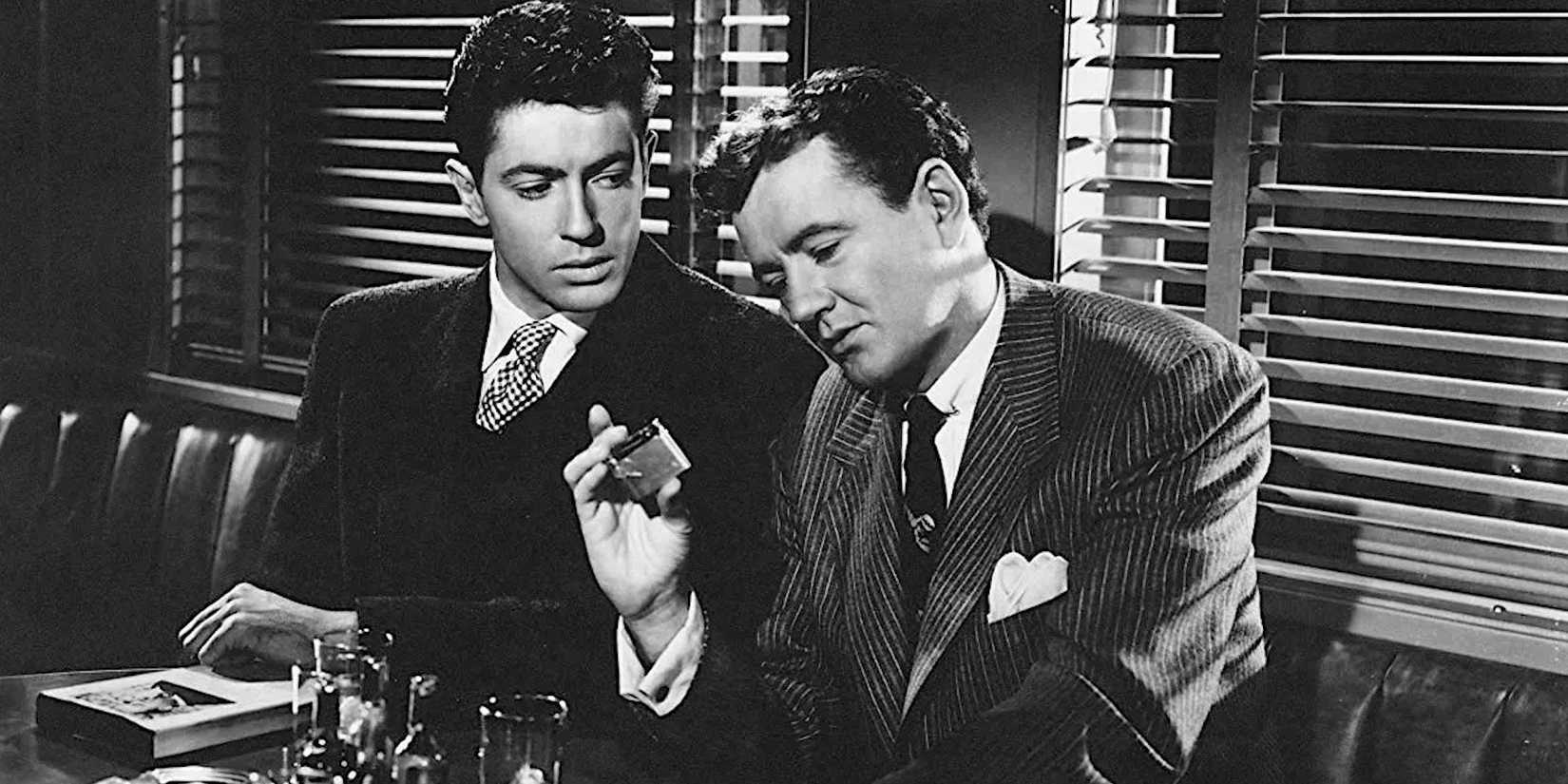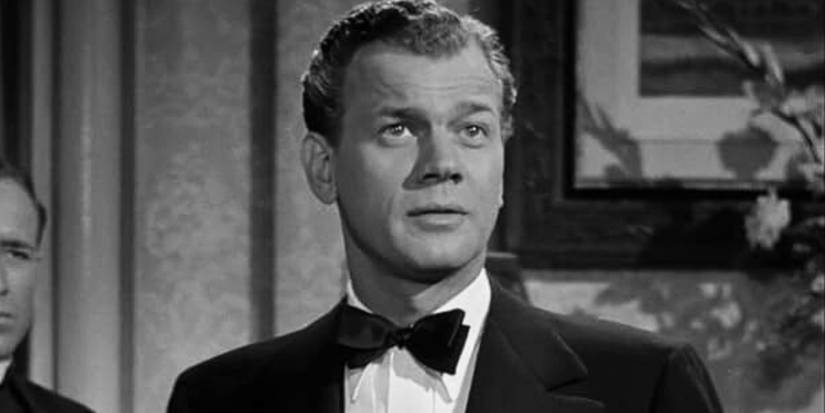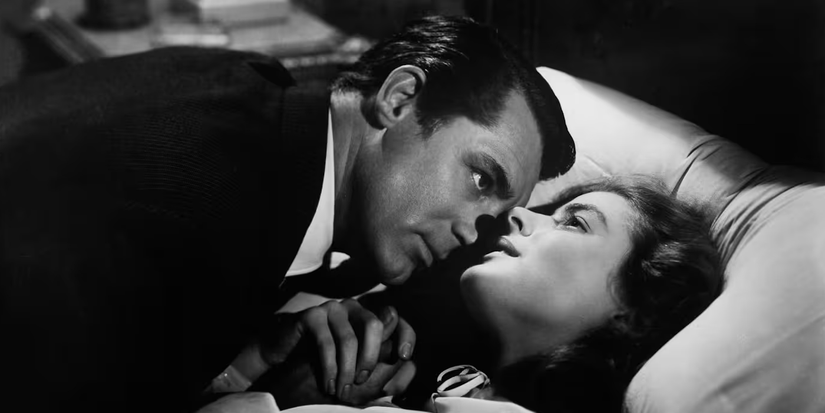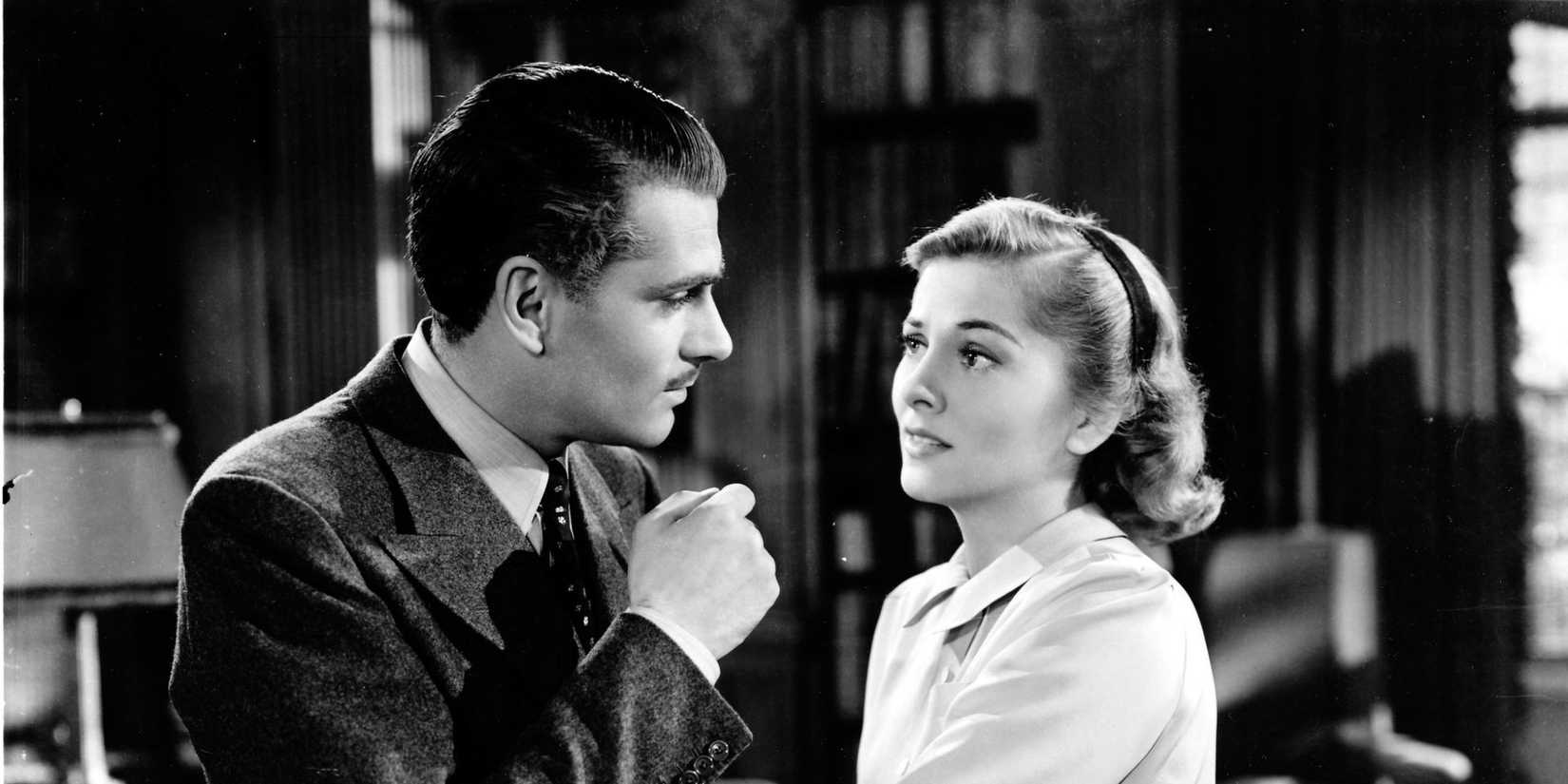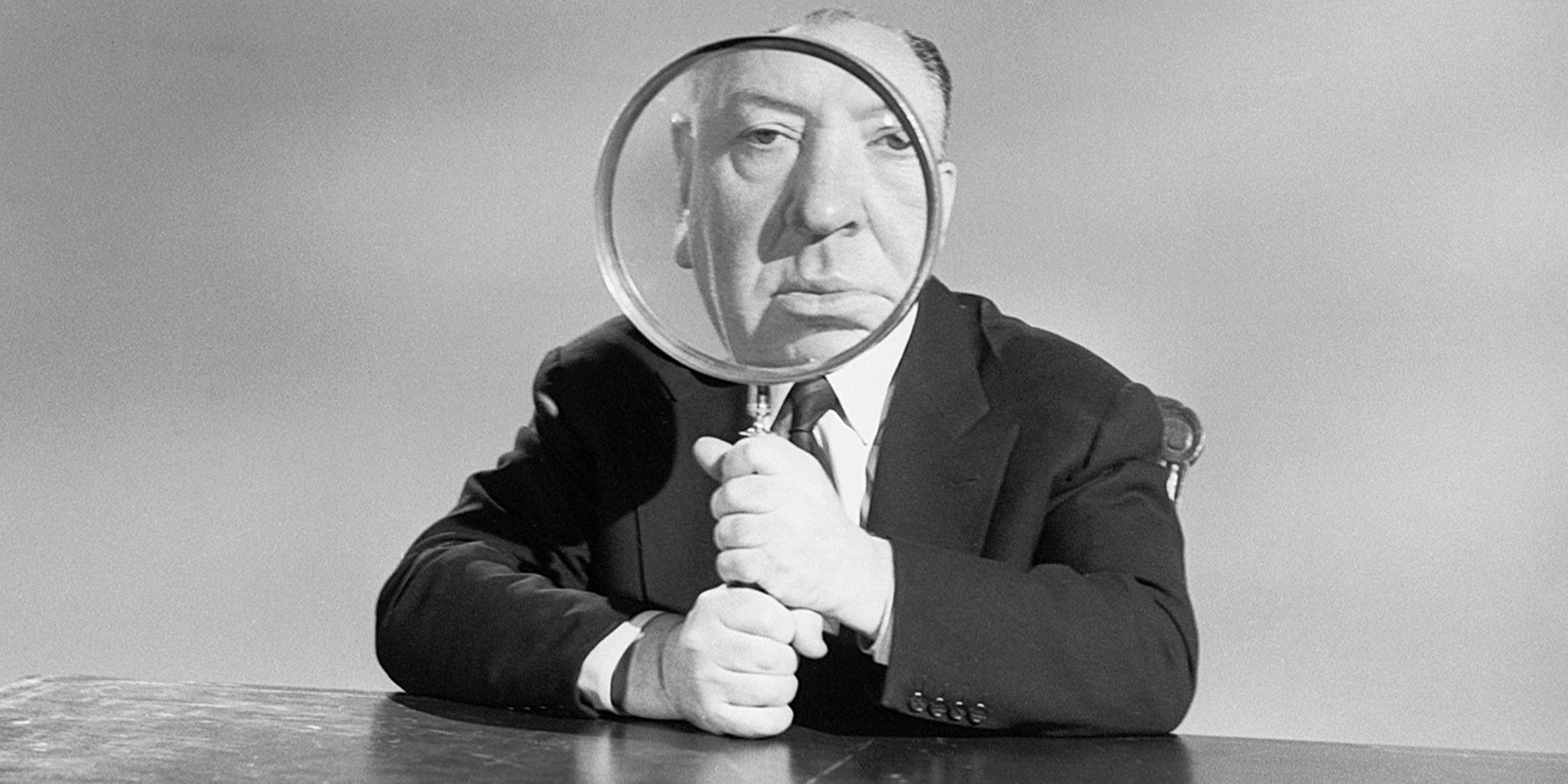
Alfred Hitchcock made over 50 feature films during his directorial career, and this level of productivity is, frankly, enviable. His feature film debut was The Pleasure Garden, a silent film from 1925, but it’s said that his sophomore feature, The Lodger: A Story of the London Fog (1927), was integral to shaping thriller as a genre.
Hitchcock’s color debut was in Rope in 1948, but he continued to make black and white movies until 1960, mainly due to budgetary restrictions. Though his peers were largely making color films by 1950, it doesn’t seem anyone is bothered that some of his greatest post-1950 masterpieces were shot in monochrome. In fact, this was often the defining aura that made those movies so great in the first place. The ten best black and white Alfred Hitchcock movies transcend time and trends—they’re great no matter when you watch them.
10
‘Spellbound’ (1945)
Spellbound is a glossy psychological thriller with two huge stars: Ingrid Bergman and Gregory Peck, and the movie even includes a surreal dream sequence created by Salvador Dalí. The movie was based on the 1927 novel The House of Dr. Edwardes by Hilary Saunders and John Palmer, and received widespread acclaim and praise, including six Oscar nominations. Bergman and Peck deliver stellar performances, and the film’s themes show Hitchcock’s unending interest in psychological twists and fascination with the mind.
Spellbound follows Dr. Constance Petersen (Bergman), a psychiatrist working at a mental asylum. She meets the new hospital director, Dr. Anthony Edwardes (Peck), and the two become immediately smitten with each other. However, Dr. Petersen notices strange behavioral and mental patterns in Dr. Edwardes’ personality and embarks on a psychological journey to uncover the truth. The movie is notable for Dalí’s dream sequence, but also for its exploration of the subconscious; it may not be ideal, but it’s a near-perfect film.
9
‘The Wrong Man’ (1956)
The Wrong Man was based on a true story, and Henry Fonda plays Christopher Emmanuel “Manny” Balestrero, who was wrongly accused of and charged with a crime. The film was based on the novel and newspaper article that dealt with Balestrero’s case, and it’s the only Hitchcock film based on a true story. Interestingly, The Wrong Man also very closely follows the real events, and is notable for having a somber tone and documentary feel. It’s one of Hitchcock’s most restrained films, so it may not fulfill a craving for kinetic thrillers.
The Wrong Man follows Manny Balestrero, a mild-mannered musician who gets wrongly accused of robbery by insurance employees. They force him to go through several processes of recognition, all while Manny has no idea what’s happening; as he gets arrested and a trial is prepared, his wife Rose (Vera Miles) becomes more and more ill. As Manny is put through trouble and his life unravels, viewers are compelled to feel sadness and anger for the man. The unjust treatment of Balestrero wasn’t the first or the last time the system was wrong, but luckily, in real life, things ended well for him and his wife.
8
‘Suspicion’ (1941)
Suspicion is a romantic thriller starring Joan Fontaine and Cary Grant, and it’s the only Hitchcock movie that has an Oscar-winning performance in it; Fontaine won for her feverish and paranoid performance as Lina. Furthermore, this was the first of Hitchcock’s collaborations with Grant, who later starred in three of his other films, all considered masterpieces. Suspicion is intense and thrilling, but, according to Hitchcock, the studio insisted on a particular ending that wouldn’t make Grant’s character look guilty; this went away from his intention of adapting Francis Iles‘ novel, Before the Fact, in a more faithful manner.
Suspicion follows Lina (Fontaine), a shy heiress who falls for the charming but reckless Johnnie (Grant). After they marry, Lina begins to suspect that Johnnie might be planning to kill her for her money. The film succeeds in maintaining unease, tension, and paranoia as it balances Johnnie’s unending charisma with potentially sinister intentions. It does a great job of keeping the audience guessing whether Lina’s fears are just paranoia—or justified. Grant does an amazing job, too, and his character is utterly fascinating; imagine what he could’ve been if the film followed the book a little more closely.
7
‘The Lady Vanishes’ (1938)
The Lady Vanishes is the best of Hitchcock’s British period, and the movie that made David O. Selznick believe the director has a future in Hollywood. It also shows an early inclination in Hitchcock towards thrills and mysteries, often being considered among the most elaborate films of the 1930s. The Lady Vanishes is witty, suspenseful, and full of elements of espionage and intrigue; it was greatly ahead of its time, yet very timely all at once, since it was appreciated by contemporary critics and audiences as much as modern ones.
The Lady Vanishes is set aboard a train traveling through Europe, and follows its passengers. However, the focus is on a young woman, Iris (Margaret Lockwood), who befriends an elderly governess, Miss Froy (May Whitty). When Miss Froy mysteriously disappears, no one else on the train admits to seeing her; with the help of fellow passenger, Gilbert (Michael Redgrave), Iris tries to uncover the mystery of Miss Froy. There’s some romance in the film, too, and with that, The Lady Vanishes is one of Hitchcock’s wittiest and most entertaining thrillers.
6
‘The 39 Steps’ (1935)
The 39 Steps is another British classic and a timeless thriller; it can be boldly claimed that it was the most purely influential of all of Hitchcock’s films, since the “wrong man on the run” formula more or less began with this feature. Hitchcock himself made similar films later, like North by Northwest, but The 39 Steps remains a landmark feature film. Orson Welles is among the most iconic filmmakers who deemed The 39 Steps a cinematic masterpiece.
The 39 Steps follows Richard Hannay (Robert Donat), a Canadian man visiting London, who becomes entangled in a mysterious spy ring called “The 39 Steps” after a mysterious woman is murdered in his apartment. While Hannay is on the run from both the police and The 39 steps, he reaches the Scottish countryside with a reluctant companion named Pamela (Madeleine Carroll). The two continue their run and make entertaining ruses to cover their tracks throughout the film. This is foundational Hitchcock and a must-watch for all fans of his work.
5
‘Strangers On a Train’ (1951)
One of the best films of the 1950s, Strangers On a Train, is more or less perfect from start to finish. This exciting thriller has it all: themes of double identities, moral ambiguity, and a chilling villain—Bruno, played by Robert Walker. The criss-cross murder idea is brilliant, and the carousel climax is one of Hitchcock’s best set pieces. To be totally honest, if the protagonist were as compelling as Walker’s Bruno, this movie would’ve been closer to the top.
Strangers On a Train follows tennis star, Guy Haines (Farley Granger), who meets the charming sociopath, Bruno Antony (Walker) on a train. After chatting for a while, Bruno proposes a twisted pact: he’ll kill Guy’s wife if Guy kills his father. Guy dismisses this as a joke—until Bruno actually holds up his end of the bargain. The screenplay was based on Patricia Highsmith‘s novel of the same name and written by Raymond Chandler, the master of literary suspense. The Chandler–Hitchcock duo proved to be crucial for the movie’s success, which, to the director’s disappointment, came much later from more modern critics.
4
‘Shadow of a Doubt’ (1943)
Shadow of a Doubt is known for being Hitchcock’s personal favorite of his films, and he has compelling reasons for it. Beyond just enjoying the filmmaking process, which he admitted to François Truffaut in an interview, he enjoyed working with and collaborating with the film’s writer, Thornton Wilder. The movie was filmed mostly on location, taking a small, typically small American town of Santa Rosa, California. Placing evil in a town that was meant to be peaceful and calm was one of the first examples of creating a chilling contrast between innocence and hidden corruption.
Shadow of a Doubt follows Charlotte “Charlie” Newton (Teresa Wright), who is excited by the return of her beloved Uncle Charlie (Joseph Cotten) to their small hometown. However, the more Uncle Charlie and young Charlie interact, the more she begins to suspect he may be harboring a terrifying secret. Wright is exceptional in portraying fear and suspicion, while Cotten is unforgettable as Uncle Charlie. Shadow Of a Doubt is, indeed, a brilliant and true American Gothic thriller that will give you the chills.
3
‘Notorious’ (1946)
Notorious is the second collaboration between Hitchcock and Cary Grant, and it’s romantic espionage at its finest. Grant is joined by Ingrid Bergman, and their chemistry is truly off the charts. Besides, the morally complex spy plot, themes of trust and love, and a sympathetic villain make Notorious one of Hitchcock’s most mature films. It is, also, a masterclass in suspense and emotional complexity, showing they can take center stage at once. Notorious is also famous for its long tracking shots and “the longest kiss in Hollywood” at the time, lasting for two-and-a-half minutes and being interrupted every three seconds to adhere to the Hays Code.
Notorious follows T.R. Devlin (Grant), an American agent who recruits the daughter of a convicted Nazi collaborator, Alicia Huberman (Bergman), to infiltrate a Nazi circle in Brazil. The two fall in love in the process, but when Alicia is instructed to seduce the group’s leader, Alexander Sebastian (Claude Rains), the trust between them begins slipping away. The dangerous love triangle explores the divide between love and duty, while giving a certain understanding to Sebastian and his motivations.
2
‘Rebecca’ (1940)
Rebecca was Hitchcock’s first Hollywood film, produced by Selznick, and the winner of the Best Picture Oscar. Interestingly, Rebecca is also the only Best Picture Oscar winner Hitchcock has made, despite consistently delivering masterful work to the silver screens. It’s a Gothic masterpiece filled with psychological tension throughout, as the mystery at its center drives the story to a haunting conclusion. There were some conflicts between Selznick and Hitchcock regarding the screenplay, since it was an adaptation of Daphne du Maurier‘s novel of the same name. In the end, Selznick won and Hitchcock made a fairly faithful film that carried his signature throughout.
Rebecca follows a shy young woman (Joan Fontaine), who meets and marries the wealthy widower Maxim de Winter (Laurence Olivier), and moves to his grand estate, Manderley. She is the second Mrs. de Winter, which she learns quickly, as the memory of Maxim’s first wife, Rebecca, haunts the estate and dominates the household—especially through the sinister housekeeper, Mrs. Danvers (Judith Anderson). All the performances are exceptional—Fontaine thrills as a timid heroine; Olivier is powerful as brooding Maxim; and Anderson is icy and chilling as Mrs. Danvers. All of their performances help create an atmosphere of dread and obsession, turning Rebecca into a timeless thriller.
1
‘Psycho’ (1960)
Psycho is one of the most influential thrillers/horrors ever made, and it’s pretty much an obvious number one. Whether you prefer another Hitchcock feature over Psycho, this is one of those films you’ll recognize almost frame by frame even if you haven’t seen it. Psycho didn’t simply shock audiences at the time, but it inverted expectations of a villain, and bent storytelling rules by—spoiler alert—killing its protagonist about 40 minutes in. Anthony Perkins‘ Norman Bates remains one of the most iconic characters ever, and Hitchcock’s mastery of suspense is, we can freely say, at its peak here.
Psycho follows Marion Crane (Janet Leigh), a secretary of a real estate company, who steals money from her employer and goes on the run to meet her boyfriend, Sam (John Gavin). Marion stops halfway and checks into the remote Bates Motel, run by the shy and unsettling Norman Bates (Perkins) and his reclusive mother. Halfway through, the movie turns into a detective mystery that tells viewers more about Norman, and this radical narrative twist was novelty at its finest in 1960. Additionally, Bernard Herrmann‘s screeching musical score, paired with iconic imagery, made Psycho a defining film for the horror genre and cemented Hitchcock’s legacy.
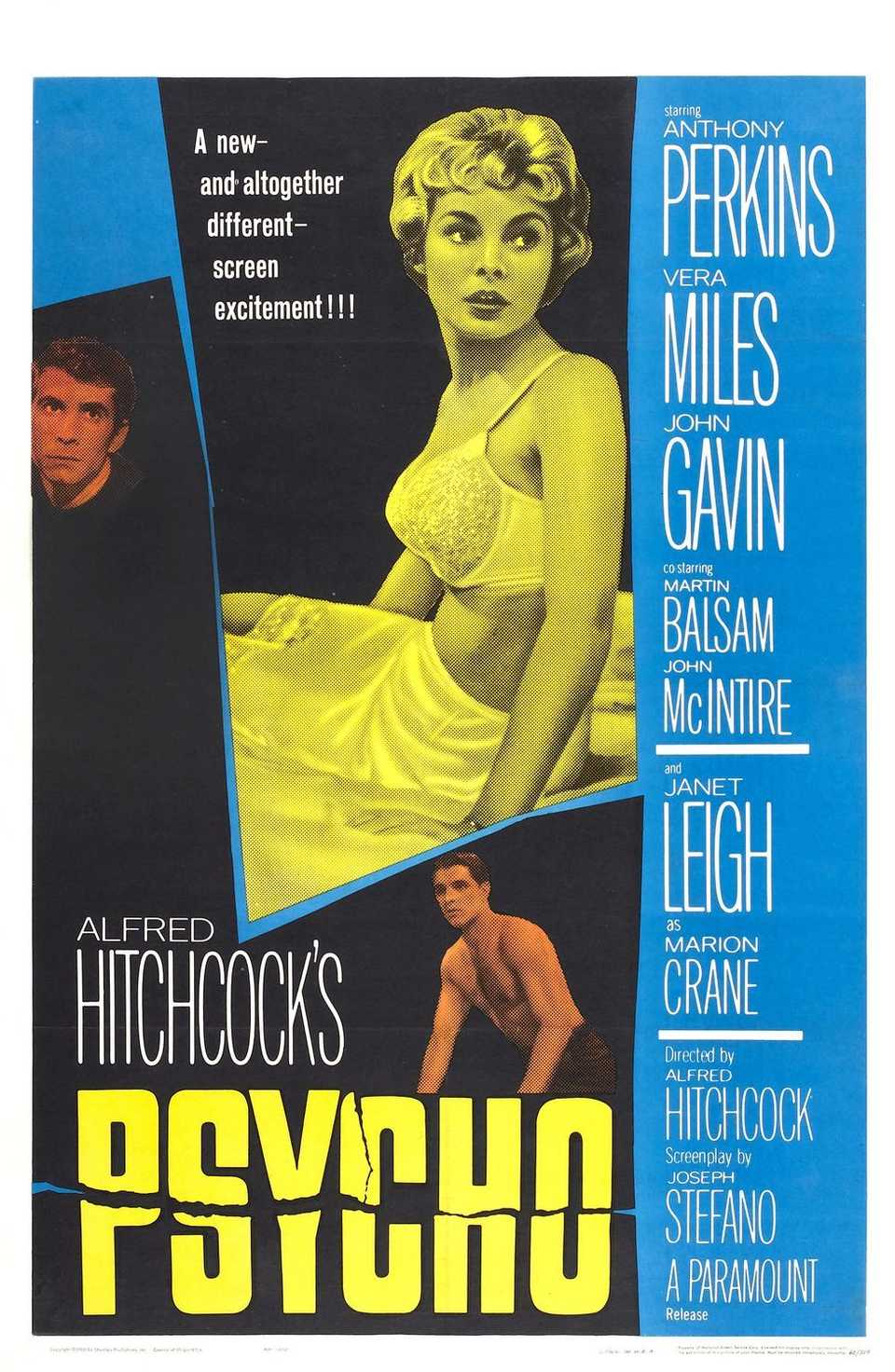
Psycho
- Release Date
-
September 8, 1960
- Runtime
-
109 minutes
Source link



